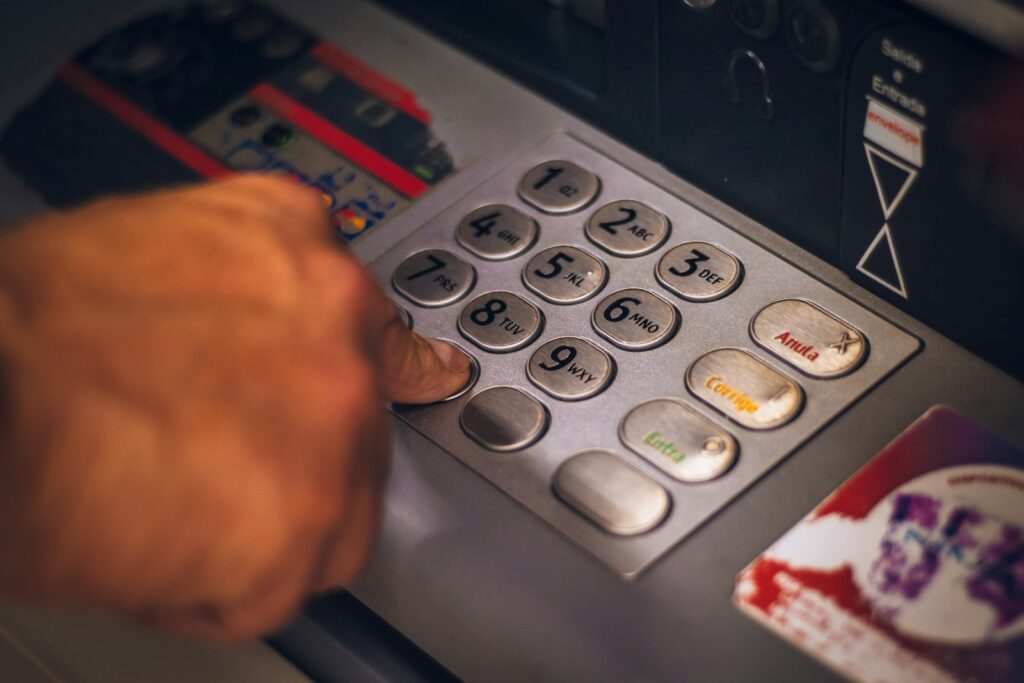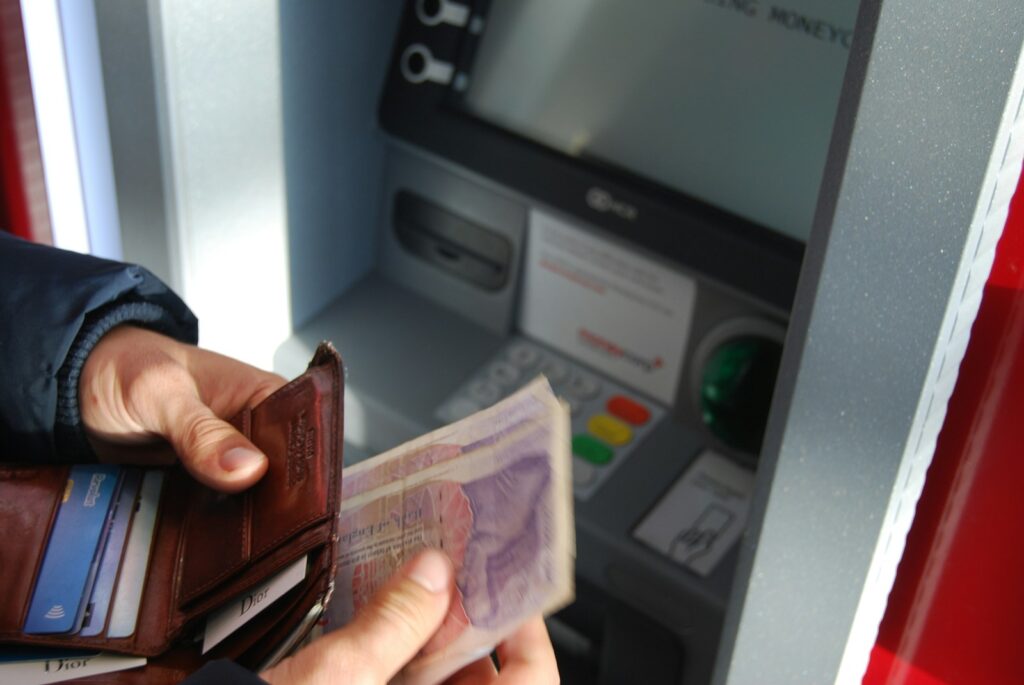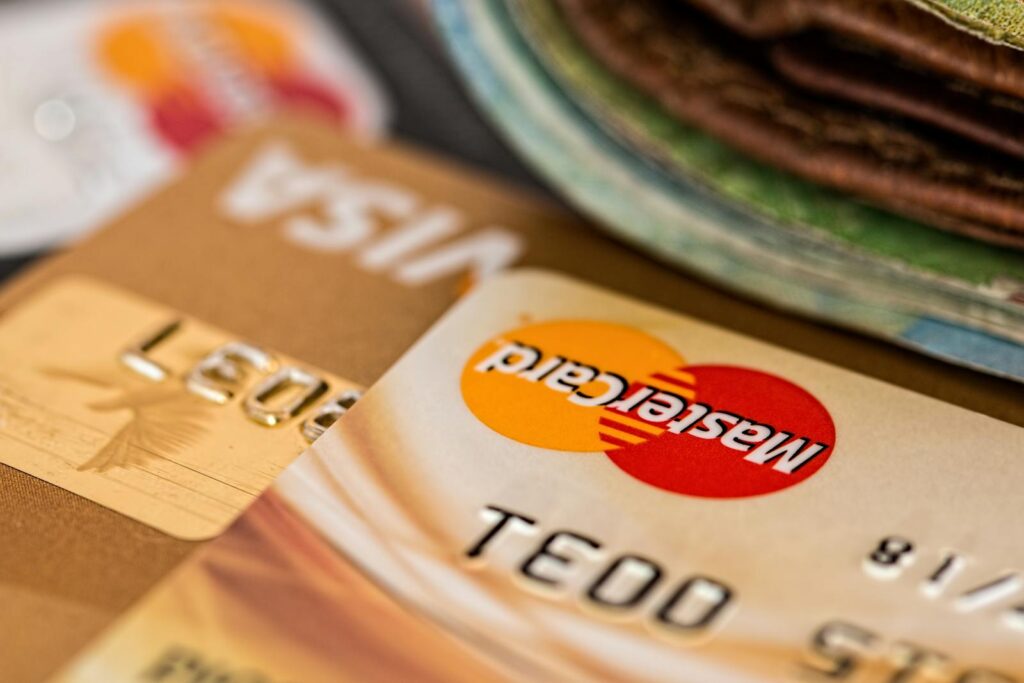
In an era where every dollar counts, it’s startling to realize how much of our hard-earned money quietly slips away through hidden bank fees. Banks collected a staggering $5.8 billion in overdrafts and NSF fees in 2023 alone, and these charges are consistently on the rise. Much of this revenue is extracted from customers who are often completely unaware they’re even being charged, only to discover later that they’ve paid hundreds of dollars in various fees over just a few months. These unexpected charges frequently hit individuals precisely when they can least afford them, creating unnecessary financial strain.
Traditional banks, by design, often profit significantly from the confusion surrounding their complex fee structures. The lack of transparent information can leave consumers vulnerable, allowing these costs to silently erode savings and checking account balances. However, this doesn’t have to be your financial reality. A growing number of individuals, particularly younger generations, are successfully navigating the banking landscape to avoid these charges entirely.
Indeed, recent research from the Federal Reserve shows that two-thirds of millennials and an impressive 70% of Gen Z manage to dodge all bank fees. These numbers clearly demonstrate that escaping bank fees is not just a pipe dream; it’s a achievable goal for informed consumers. By choosing modern banking options and understanding the common pitfalls, you too can crack the code on fee-free banking. This article will illuminate some of the most costly hidden bank fees draining your account right now, arming you with specific, practical strategies to avoid them altogether.

1. **Overdraft Fees**Overdraft fees are arguably one of banking’s most profitable revenue streams, generating substantial income from customers’ financial missteps. These charges occur when you spend more money than you have in your checking account, and the bank, rather than declining the transaction, covers the difference. While seemingly a convenience, this comes at a steep price, often catching account holders off guard during already tight financial periods.
Banks typically charge an average of $35 every time your account goes negative, even by a few cents. What’s more, some institutions may allow multiple overdraft fees per day, meaning a single day of poor timing or several small purchases can easily accumulate to $175 or more in charges. Many banks even employ a tactic where they deliberately process your largest transactions first, followed by smaller ones, specifically to maximize the number of overdrafts they can charge you.
The real-world impact of overdraft fees is often most keenly felt during periods of financial stress. When your balance is already low, banks’ transaction processing methods can exacerbate the problem, leading to multiple charges that might even exceed the original transaction amounts. Imagine an automatic bill payment hitting before your paycheck, followed by a small coffee purchase, and suddenly you’re facing several unexpected fees that compound your financial worries. This is a common scenario that can quickly spiral.
Fortunately, there are straightforward ways to protect yourself from these charges. The simplest defense is opting out of overdraft coverage entirely; this means your card will be declined if you lack sufficient funds, preventing fees. Additionally, setting up account alerts to notify you when your balance drops below a specified threshold, such as $100, can provide an early warning. Linking your checking account to a savings account for automatic transfers can also act as a buffer, preventing your checking balance from going negative.
Beyond these personal strategies, consider exploring banks that offer more consumer-friendly policies. Some institutions provide overdraft forgiveness for first-time incidents, while credit unions often boast lower fees overall. Online banks, in particular, have built their brands around offering no overdraft charges, presenting a compelling alternative for those seeking to avoid these costly occurrences. Switching to such an institution can offer long-term peace of mind and significant savings.
Read more about: A Financial Advisor’s Blueprint: 15 Essential Investment Strategies for a Secure Retirement in 2025

2. **Non-Sufficient Funds (NSF) Fees**Closely related to overdrafts, Nonsufficient Funds (NSF) fees are charged when you attempt to make a payment without enough money in your account, and the bank declines the transaction rather than covering it. This often happens with traditional payment methods like checks that bounce or automatic bill payments that fail due to insufficient funds. While many major banks have begun to eliminate this fee, they still persist in many institutions, silently penalizing customers for financial missteps.
Typically, NSF fees range from $30 to $35 per occurrence. Unlike overdrafts where the bank fronts the money, an NSF fee means the transaction simply doesn’t go through, and you’re charged for the attempted payment. This can not only be frustrating but can also lead to additional problems, such as late payment fees from creditors or service interruptions, adding layers of cost and inconvenience beyond the initial bank charge.
To avoid these inconvenient and costly fees, vigilance over your account balance is paramount. Regularly checking your account and setting up low-balance alerts on your phone or computer can give you real-time insights into your financial standing. Maintaining a small buffer amount in your checking account, a kind of safety net, ensures you always have a little extra cushion to cover unexpected minor expenses or timing differences in payments.
Another effective strategy involves linking your checking account to a savings account for overdraft protection, which, as discussed, can prevent both overdraft and NSF fees by automatically transferring funds. Timing your bill payments to happen immediately after you receive your paycheck can also help ensure funds are available when needed. This proactive approach minimizes the risk of payments being declined due to insufficient funds.
For those seeking a more permanent solution, exploring digital-first banks can be highly beneficial. FDIC-insured digital accounts from institutions like Capital One 360, SoFi, Chime, and Alliant have notably built their brands around fee-free banking. These modern banking solutions often eliminate NSF fees entirely, along with many other common charges, making them an attractive option for consumers aiming to simplify their financial lives and avoid unexpected penalties.
Read more about: Is Your Bank Account Leaking Money? The 14 Sneaky Hidden Fees You’re Probably Paying (and How to Stop Them!)

3. **Monthly Maintenance Fees**Many banks advertise “free checking accounts,” yet a closer look often reveals monthly maintenance fees that can accumulate to hundreds of dollars annually. These fees are a significant source of income for traditional banks, helping to cover their operational costs, including the overhead associated with staffing and maintaining brick-and-mortar branches. For the consumer, however, they represent an avoidable drain on their finances.
The problem arises when banks charge monthly maintenance fees ranging anywhere from $12 to $25. What’s more, to waive these fees, many institutions impose specific conditions, such as requiring minimum daily balances, which can sometimes exceed $1,500, or mandating regular direct deposits of a certain amount. Other fee waivers might depend on the size or frequency of your transactions, or even require you to maintain sufficient combined balances across various bank products, making them difficult to consistently meet.
Real-world impacts of these fees often manifest during life transitions. Consider a student who opens an account with no monthly fees while in college; upon graduation, the bank might automatically convert it to a standard checking account with a $15 monthly charge, costing hundreds before she even notices. Similarly, a retiree whose pension switches from direct deposit to mailed checks could suddenly face $25 monthly maintenance fees on an account that was previously free. These scenarios highlight how easily these fees can become an unexpected burden.
To effectively avoid monthly maintenance fees, a key strategy is to consider online banks. These institutions frequently offer genuinely free checking accounts with no balance requirements or convoluted conditions that you discover only after opening the account. Credit unions also typically present more reasonable fee structures and lower minimum balance thresholds, making them a consumer-friendly alternative to traditional banks.
If you prefer to stick with a traditional bank, the most important step is to thoroughly understand and consistently meet the specific requirements for fee waivers. This might involve maintaining a required direct deposit amount, ensuring a sufficient combined balance across your accounts, or utilizing employer banking partnerships that often include fee waivers. By being proactive and informed, you can prevent these recurring charges from eroding your savings.
Read more about: A Financial Advisor’s Blueprint: 15 Essential Investment Strategies for a Secure Retirement in 2025

4. **Out-of-Network ATM Fees**ATM fees might appear small on an individual transaction basis, but for anyone who frequently withdraws cash, they can quickly accumulate into substantial annual costs. These charges are a double-edged sword, as you often face two fees for a single transaction when using an ATM outside your bank’s network: one from your own bank for using an external ATM, and another from the ATM owner for using their machine.
Out-of-network ATM fees typically range from $2.50 to $5 per transaction. This “double payment” scenario means a quick cash withdrawal can easily cost you $5 to $10. International travel multiplies these costs dramatically, with foreign ATMs adding conversion fees on top of withdrawal fees, and some even offering dynamic currency conversion at unfavorable exchange rates, leading to significantly higher overall charges.
For business travelers, particularly those frequently accessing cash overseas, hundreds of dollars can be spent annually on ATM fees alone. Similarly, workers who grab cash during daily errands from convenience store ATMs might not realize how quickly these seemingly small charges add up over months. These accumulating fees can become a significant hidden expense that many people only notice if they meticulously review their annual banking costs, often to their dismay.
Avoiding these fees requires smart planning and awareness. Credit unions frequently offer access to massive ATM networks, such as CO-OP and Allpoint, which often come with no fees. Many online banks go a step further by reimbursing all out-of-network ATM charges monthly, effectively giving you free access to almost any ATM. Another simple trick is to get cash back when making purchases at grocery stores or pharmacies, eliminating the need for an ATM visit entirely.
Strategic planning can prevent most ATM fees. This includes withdrawing larger amounts less frequently, using bank branches during business hours for free withdrawals, and downloading ATM locator apps to find fee-free machines in your area. Ultimately, choosing a bank or credit union that provides extensive, fee-free ATM networks or offers robust reimbursements is a fundamental step toward eradicating these persistent charges from your financial life.
Read more about: Is Your Bank Account Leaking Money? The 14 Sneaky Hidden Fees You’re Probably Paying (and How to Stop Them!)

5. **Wire Transfer Fees**Moving your own money, whether between accounts at different institutions or sending funds to others, is another significant source of fees that many banks don’t advertise upfront. While useful for rapid transactions, wire transfers come with a clear cost, making them an expensive proposition for routine money movement. The convenience often comes with a hefty price tag, especially when urgency is involved.
Domestic wire transfers typically cost between $15 and $35, while international wire transfers can range from $25 to $50 or more per transaction. It’s not just big international movements that incur fees; some banks may even charge for seemingly simple transfers between your own accounts at different institutions. Additionally, fees can be imposed for expedited ACH transfers or same-day processing, even for transactions that are usually free when standard timing is allowed.
Emergencies frequently reveal the true cost of wire transfers. Imagine needing to send money immediately to a family member facing a medical emergency abroad; a wire transfer fee could be $45, with the receiving bank potentially adding another $25, making a stressful situation even more financially burdensome. In another scenario, a homebuyer might discover unexpected wire fees during the purchase process, where a delayed transfer could jeopardize the closing, forcing them to pay extra to expedite it.
Fortunately, modern payment apps have largely eliminated most transfer fees for personal transactions. Services like Zelle, Venmo, and PayPal allow you to move money instantly between friends and family at no cost, making them excellent alternatives for non-commercial transfers. While these services do make money on certain features, personal P2P payments are usually free, offering a crucial workaround for many.
For international transfers, specialized services like Wise (formerly TransferWise) often provide better exchange rates and significantly lower fees compared to traditional banks. For non-urgent domestic payments, standard ACH transfers are usually free, although they take a few business days. Bill pay systems for recurring payments also offer a no-cost solution. By exploring these alternatives, you can circumvent most wire transfer fees and keep more of your money where it belongs.
Read more about: Rethink Your Fuel Strategy: Why Maximizing Credit Card Rewards at the Pump Is a Smart Move for Every Driver

6. **Paper Statement Fees**In an increasingly digital world, some banks have begun to charge fees for services that were once standard and provided at no additional cost. This includes physical paper statements, with banks rebranding basic customer service functions as premium conveniences. What was once a given for all customers, especially those who prefer physical records, has now become an additional, often hidden, monthly expense that silently chips away at your account balance.
Paper statement fees can range from $1 to $5 per month at certain banks. While seemingly minor, this can add up to $12 to $60 annually for customers who prefer or require physical records for various reasons, such as tax preparation or personal budgeting. Beyond statements, some institutions also impose charges for telephone banking assistance, with calls incurring costs of $5 or more, even for simple balance inquiries, turning customer support into a paid service.
The hidden costs of traditional banking become evident in real-life scenarios. An elderly customer, for example, might refuse to use online banking due to unfamiliarity or preference, and consequently pays $5 monthly for paper statements. This adds a recurring charge for a service that was once free and essential. Another instance might involve a business traveler whose automatic payment fails during a trip; a call to make an emergency payment by phone could then reveal an unexpected $15 convenience fee after the transaction is completed, turning a moment of need into another financial penalty.
To eliminate these unnecessary bank fees, embracing electronic statements is the most straightforward solution. These digital documents provide the same crucial information without the monthly charges and often offer superior organization through searchable archives. Similarly, mobile banking apps are designed to handle most routine transactions that previously necessitated phone calls, providing convenience without the associated fees.
Setting up automatic bill pay not only prevents late fees but also eradicates the need for emergency phone payments, thus bypassing any ‘convenience’ fees. For those who still need physical copies, downloading PDF statements and printing them at home is a simple, cost-free alternative. By leveraging these digital tools and habits, you can effectively cut down on paper statement fees and similar charges, ensuring your banking remains truly free.
While the previous section armed you with strategies to tackle some of the most common bank fees, many other subtle charges can still quietly chip away at your savings. Banks, unfortunately, have a knack for finding numerous ways to monetize your financial activity, sometimes even penalizing you for inactivity or specific types of transactions within your own accounts. Understanding these less obvious fees is just as crucial for achieving true fee-free banking and keeping more of your hard-earned money. Let’s delve into six more frequently overlooked bank fees and explore how you can deftly navigate around them.
Read more about: A Financial Advisor’s Blueprint: 15 Essential Investment Strategies for a Secure Retirement in 2025
7. **Foreign Transaction and Currency Exchange Fees**International purchases and travel introduce customers to multiple layers of fees that banks often fail to explain clearly before your trip abroad. Whether you’re making purchases while traveling or shopping online from foreign retailers, foreign transaction fees typically add an extra 2.5% to 3% to your international transactions. This can quickly inflate the cost of your purchases, turning an exciting international shopping spree or vacation into a more expensive endeavor than anticipated.
Beyond these direct transaction fees, you might also encounter dynamic currency conversion at merchant terminals, which often offers unfavorable exchange rates and additional fees. Some banks even tack on separate charges for international debit card usage on top of these currency conversion costs. Consider a traveler’s week abroad where thousands in expenses could trigger hefty foreign transaction fees. Additionally, accepting dynamic currency conversion at several merchants could mean paying significantly more due to these unfavorable rates, adding unforeseen costs to an already planned budget.
To smartly circumvent these international charges, travel-focused credit cards are an excellent solution. Many of these cards eliminate foreign transaction fees and often provide superior fraud protection compared to debit cards when you’re abroad. Furthermore, a growing number of online banks now waive international fees as a standard feature, rather than offering them as a premium perk, making them an attractive option for globetrotters or frequent international online shoppers.
When making international purchases, always decline dynamic currency conversion at the point of sale. This ensures your transactions are processed in the local currency, allowing your card network to handle the conversion at a typically more favorable rate. It’s also wise to notify your banks of your travel dates to prevent card blocks, use airport ATMs sparingly due to their notoriously higher fees, and research which cards offer the best benefits in your destination country. These simple yet effective strategies can significantly reduce your international banking costs.
Read more about: From ‘Siesta Key’ to Billions: Unpacking Sam Logan’s Unexpected Fortune and Strategic Empire Building
8. **Excessive Bank Fees on Savings Accounts**It might seem counterintuitive, but banks can impose transaction limits on savings accounts, which can generate unexpected fees if you use these accounts too frequently. While federal regulations historically limited savings account withdrawals to six per month, and this rule was recently changed, many banks still continue to charge between $1 to $5 for each excess transaction. Most customers remain unaware that their savings accounts come with these transaction restrictions, thinking of them as freely accessible funds.
These transaction limits count various types of money movement, including transfers to checking accounts, ATM withdrawals, and online bill payments. The real impact is that using your savings account like a checking account can quickly lead to substantial penalties. For example, a college student mistakenly using her savings account for daily expenses, believing it’s a smarter choice due to higher interest, could accumulate significant excess fees before realizing the problem. Similarly, someone facing a medical emergency requiring multiple urgent transfers might trigger significant penalties across several transactions during a stressful time.
To avoid this particular transaction trap, it’s wise to keep frequently accessed emergency funds or money for routine expenses in your checking account rather than your savings account. This strategy prevents you from hitting those transaction limits. Additionally, planning larger, less frequent transfers from savings instead of multiple small withdrawals can help you stay within any remaining monthly allowances. Many online banks have proactively eliminated these excess transaction fees entirely, making them a consumer-friendly alternative.
Effective account management also involves strategic planning. Consider scheduling planned monthly transfers on specific dates to manage your funds more predictably. Utilizing high-yield checking accounts for active money management can also be a smart move, providing both accessibility and potential earnings. For instance, Bread Financial’s high-yield savings account offers unlimited transfers and withdrawals without maintenance or overdraft fees, while paying a competitive APY, demonstrating how modern solutions can eliminate these historical charges.
Read more about: The 14 Essential Tips That Can Save You Over $700 on Your Next Internet Bill This Year
9. **Returned Deposit Fees**Imagine the frustration of depositing a check only for it to bounce because the person who wrote it didn’t have enough money in their account. While it’s certainly not your fault, some banks might still charge you a ‘returned deposit fee,’ also known as a ‘returned item fee.’ This penalty can typically range from $20 to $50 per occurrence, adding insult to injury when you’re already dealing with a failed transaction and potentially delayed access to funds.
This fee highlights how banks can monetize situations that are entirely out of your control. You’ve acted responsibly by depositing the check, but you’re still penalized for the original check writer’s insufficient funds. Beyond the direct cost, a returned deposit can cause further inconvenience, such as needing to re-deposit the check or pursue alternative payment methods, prolonging the resolution of your financial transaction.
To proactively avoid returned deposit fees, a crucial step is to ask for electronic payments whenever possible instead of relying on physical checks. Electronic transfers like direct deposits or digital payments via services like Zelle reduce the risk of bounced checks. When checks are unavoidable, it’s important to know who you’re accepting them from and ensure they are financially reliable, especially for larger amounts.
Additionally, waiting for checks to fully clear before spending the deposited money can protect you from potential fees and financial headaches. If the check does bounce, you won’t be in a position where you’ve already spent funds that aren’t truly available. Furthermore, some forward-thinking banks, such as Ally Bank and Capital One, have made the consumer-friendly decision to not charge returned deposit fees. SoFi’s Checking and Savings combo account is another example, specifically avoiding this potential cost when someone else’s check bounces.
Read more about: Car Subscription Services: A Comprehensive Review to Determine Their Value and Fit for Your Lifestyle
10. **Early Account Closure Penalties**Just as banks can penalize you for not using an account enough, they can also charge a fee if you decide to close your account too quickly. Many institutions impose an ‘early account closure fee’ when you shut down an account within a few months of opening it, typically ranging from $25 to $50. This charge is primarily meant to discourage customers from opening accounts merely to take advantage of promotional bank bonuses and then immediately closing them.
These timing penalties often apply if an account is closed within 90 to 180 days of its opening. While it seems like a straightforward request to close an account that no longer serves your needs, banks view these early exits as an administrative cost they seek to recover. This can be particularly frustrating if your circumstances change unexpectedly shortly after opening a new account.
Consider a scenario where someone switches jobs and, at the recommendation of their new employer, opens an account with a preferred bank. If they then decide to close their old account after only two months, perhaps due to convenience or consolidation, they might unexpectedly trigger an early closure penalty. This fee adds an unnecessary financial burden to what should be a simple administrative task during a life transition.
To steer clear of these penalties, the most effective strategy is to choose a bank you intend to stay with for the long term. Before opening any new account, meticulously read the account’s terms and conditions, specifically looking for any clauses related to early closure fees and the required minimum holding period. If, despite your best intentions, you find yourself needing to close an account early, it can often be beneficial to directly contact your bank, explain your situation, and politely request a fee waiver, especially if you have a good banking history.
Read more about: Beyond the Dashboard: Unmasking the Shocking Data Collection Habits of Your Connected Car

11. **Dormant Account Fees**On the flip side of closing an account too soon, banks can also penalize you for staying too long without any activity. If your bank account remains unused for an extended period, typically six to 12 months, your bank might start charging you an ‘inactivity fee’ or ‘dormancy fee.’ These fees, which can range from $5 to $15 per month, continue to chip away at your balance until the account is entirely depleted, becoming a silent drain on your unused funds.
Life events, such as long absences or job changes, are common triggers for these unexpected account fees. Imagine a service member deploying overseas for 18 months, his focus entirely on his mission rather than banking. Upon his return, he might discover that his account has racked up hundreds of dollars in dormant fees, turning his dedicated service into an unexpected financial penalty. This highlights how easily these fees can go unnoticed during periods of life upheaval.
Fortunately, protecting your accounts from dormancy fees is relatively simple. Making even a small deposit or withdrawal at least once every few months is usually enough to keep an account active. Setting up automatic bill payments or small transfers through the account can also serve as regular activity, preventing it from being flagged as dormant. If you truly no longer need an account, considering closing it might be a more cost-effective solution than letting it sit idle and incur fees.
For those anticipating extended absences, such as military deployment, scheduling automatic savings transfers before you leave is a wise prevention method. Another effective strategy involves consolidating multiple unused accounts into one primary account to simplify management and ensure activity. If you’re in the military, contacting banks directly about potential military service exemptions for dormancy fees can also be beneficial. Setting calendar reminders for minimum account duration periods can also help you stay on top of these requirements.
Read more about: Is Your Bank Account Leaking Money? The 14 Sneaky Hidden Fees You’re Probably Paying (and How to Stop Them!)

12. **Checkbook Ordering Costs**In an increasingly digital financial landscape, ordering physical checks might seem like a minor expense, but it’s another area where banks frequently charge a fee. Most banks charge for check printing whenever you need to order a new checkbook or restock your current supply. The cost can vary significantly depending on factors like the style, quantity, and whether you order directly through your bank or use a third-party check printer.
These check printing fees can typically range from $15 to $35 per order. Basic checks usually cost less, while more elaborate designs or special features can drive up the price. For many consumers, especially those who still rely on checks for certain payments, this represents an often-overlooked expense that adds to their annual banking costs, subtly contributing to the overall drain on their funds.
To effectively minimize or avoid checkbook ordering costs, one of the best strategies is to consider ordering checks from third-party printers. These companies often charge significantly less than what banks typically do for the same product. When ordering, opting for a basic check design can also help keep costs down, as fancy designs or security features often come with a premium price tag.
Furthermore, if you anticipate needing checks over an extended period, ordering larger quantities at once can result in a better per-check price, offering a bulk discount. However, the most impactful way to avoid these fees entirely is to reduce your reliance on checks. Embrace online bill pay systems or person-to-person payment services like Zelle, Venmo, or PayPal for most transactions, as these are typically free. Some banks, like Consumers Credit Union with its Free Rewards Checking, even provide free starter checks and offer unlimited check writing, presenting a truly fee-free option for those who still need them.
**Stop Sneaky Bank Fees and Reap the Rewards**
Hidden bank fees are not an inevitable part of modern financial life. They are, in essence, streams of profit that banks establish, often taking advantage of uninformed customers. As this comprehensive guide has shown, for nearly every fee mentioned, there are practical alternatives and workarounds available that you can start implementing today.
Your first proactive step should be to take a hard look at your last six months of bank statements. Meticulously pinpoint any fees you’re currently paying, then calculate your annual costs. This clear understanding of your current financial outflow will empower you to research fee-free alternatives in your area, whether they are credit unions or online banks. Many informed customers discover they can save anywhere from $200 to $500 annually simply by switching to institutions that prioritize consumer well-being over excessive charges.
Don’t hesitate to engage directly with your bank if you spot an unexpected fee. As Rebell, an expert in the field, suggests, “Sometimes a simple phone call asking them to waive the fee in order to keep your business will even get the job done.” Be polite but firm, highlighting your tenure as a loyal customer. If you’re considering a switch, mentioning this might provide your bank with the motivation needed to reduce or eliminate the fees. Always inquire about specific actions you can take to avoid future charges, such as upgrading your account settings, and ensure any agreements are documented for your records.
The decision to move from a traditional bank to an online bank or credit union can be a significant one, particularly for those accustomed to brick-and-mortar branches. While the average adult might stick with the same bank for around 17 years due to convenience, the financial benefits of making a switch are substantial. Online banks and credit unions operate with significantly lower overhead costs, allowing them to pass those savings directly to you through fewer fees—or even no fees at all—and often higher interest rates on savings and other deposit accounts. They typically offer robust digital tools, like mobile check deposits and comprehensive customer support via chat, phone, or email, ensuring convenience without the hidden costs.
Your relationship with your bank should fundamentally build your wealth, not silently erode it through sneaky, avoidable charges. By staying informed, actively managing your accounts, and being willing to explore modern banking alternatives, you can take control of your financial destiny and ensure that your money stays where it belongs: in your pocket.







